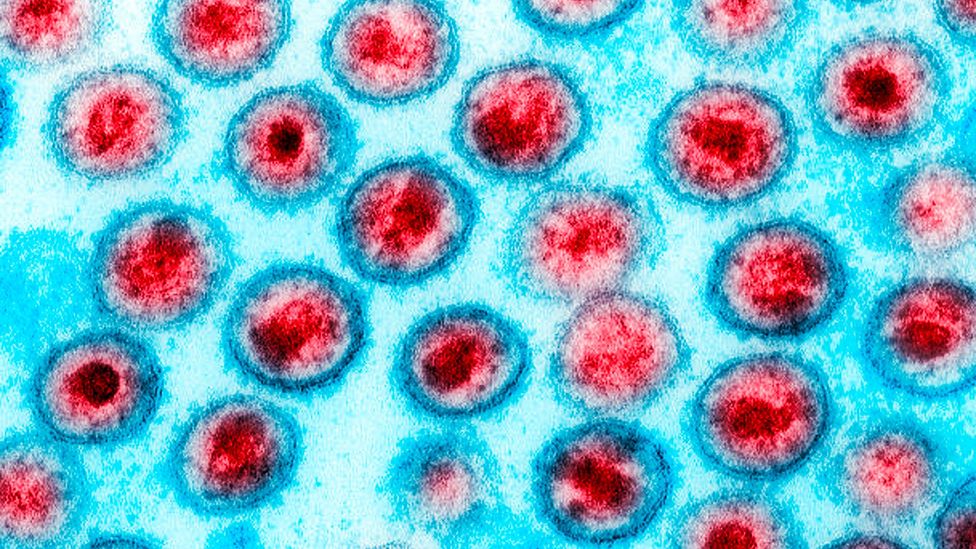The Mabuya lizards that live in the Andes mountains of Colombia are not like other reptiles. While the majority of reptiles lay eggs with hard shells, some Mabuya species give birth to live young. Crucially, the mothers have placentas: specialized organs for feeding the developing young inside their bodies. Placentas are more commonly associated with mammals like mice and humans: we are placental mammals. But other kinds of animals have also evolved placentas. And in 2001 zoologists Martha Patricia Ramírez-Pinilla and Adriana Jerez of the Industrial University of Santander in Bucaramanga, Colombia, revealed that Mabuya lizards have extremely advanced placentas, not too dissimilar from ours. While this was surprising enough for a reptile, which typically lay leathery eggs, the real revelation came 16 years later, when Ramírez-Pinilla teamed up with geneticist Thierry Heidmann of Gustave Roussy in Paris, France, and his colleagues. They found that the lizards have a gene that is essential for the formation of the placenta, and that gene came from a virus. Within the last 25 million years, the ancestors of the lizards were infected by a virus that incorporated some of its own DNA into their genome.
But instead of being harmed, the lizards somehow co-opted the viral DNA and used it to develop their first placentas. Thanks to the virus, the lizards evolved a new organ. "The genomic acquisition coincided with the shift from non-placental to placental lizard," says Heidmann. The unusual thing about this story, however, is that it is not unusual. About a tenth of the human genome comes from viruses, and that viral DNA has played crucial roles in our evolution. Some of it was the source of the mammalian placenta. Other bits are involved in our immune response against disease and in the formation of new genes. Without viruses, humans could not have evolved.

Viruses are so simple that many biologists do not regard them as fully alive. Each virus is essentially a microscopic package of genetic material. They can only reproduce by infecting living cells: they subvert the cell's machinery to make copies of themselves. In doing so they often make their hosts ill. Viruses that insert their own genetic material into the host's genome are called retroviruses. Their nature was first understood in the 1960s and 1970s, although some had been isolated decades before. Following a suggestion in 1964 that some viruses might copy their own genetic material into the DNA of their hosts, researchers identified DNA of viral origin in the genomes of chickens. Despite being a large and diverse group of viruses, only four retroviruses are currently known to infect humans. All were discovered in the 1980s: human T-lymphotropic virus 1 (HTLV-1), which causes a form of cancer, along with the closely related HTLV-2; and human immunodeficiency virus (HIV) types 1 and 2, which cause Aids.
If a retrovirus infects a cell in a person's lungs or skin, that may be bad news for the person, but it has limited consequences for our species' evolution as this DNA is not passed onto the next generation. However, sometimes a retrovirus gets into the germline: the cells that give rise to eggs and sperm, where viral DNA can be passed onto our offspring. These pieces of viral DNA are called endogenous retroviruses or ERVs. It is these heritable bits of viral DNA that can change the course of evolution.
ERVs everywhere
The sheer scale of human ERVs was revealed when the first draft of the human genome was published in 2001. "It turned out there was a huge amount of viral sequence," says Heidmann. About 8% of the human genome consists of ERVs. Some of them are truly ancient. One study in 2013 identified an ERV on the human chromosome 17 that is at least 104 million years old and probably older. That means it is the result of a virus infecting a mammal deep in the era when dinosaurs ruled the Earth. The ERV is only found in mammals with placentas, so it may have integrated soon after placental mammals split from their marsupial cousins. ERVs aren't confined to mammals and reptiles, either. "All vertebrates have endogenous retroviruses," says molecular virologist Nicole Grandi at the University of Cagliari in Italy. Most human ERVs are not unique to our species but can also be found in at least some other primates, such as chimpanzees. This means they got into primate genomes millions of years ago, long before our own species evolved, and we then inherited them from our ape ancestors.
Curiously, there is no evidence of new ERVs entering the human genome in the last few thousand years. The only retroviruses our species currently has to deal with are HTLV and HIV, says Grandi, and neither has been reported to infect germline cells. "Currently we cannot see active endogenization in humans," says Grandi. This is in stark contrast to some other species. Koalas are currently being invaded by koala retrovirus (KoRV), DNA from which is found in some populations of koalas but not others. Koala geneticists are therefore able to watch "a genome invasion in real time". Origin of the placenta Human ERVs was originally thought of as inactive "fossil sequences" or part of the genome's "junk DNA".
However, in common with a lot of supposed junk DNA, it turns out that many human ERVs are active. (Learn about the crucial role junk DNA may play in this article by David Cox.) The most studied ERVs in the human genome are called HERV-W, first described in 1999. They encode proteins called syncytins, which are found in the placenta. Just like in the Mabuya lizards, these viral genes are essential for the placenta to form. This link between viruses and the placenta makes sense when you consider what syncytins actually do. These proteins have the ability to fuse two or more cells into one. When they were viral proteins, they were used by the virus to fuse with the outer membrane of a cell and thus infect it.
This fusion ability has been co-opted by the placenta. By fusing cells from the mother and cells from the embryo, the placenta can transfer nutrients to the embryo and extract wastes. And it's not just humans. Similar syncytin proteins are found in other apes like gorillas. More recent studies have shown that retroviruses have infected mammals repeatedly throughout their evolutionary history, so different groups of mammals often have different syncytins derived from different retroviruses. "We hypothesize that in fact there was a founding ERV capture 150 million years ago, which led to the emergence of placental mammals," says Heidmann. Since then, repeated infections seem to have overwritten that original ERV, so it cannot be found in any living mammal. The Mabuya lizard study was important because it demonstrated that the lizards only acquired placentas after first acquiring the ERV from a virus – suggesting the same thing happened in the ancestor of all placental mammals. "It gave the demonstration of the link between acquisition of a placenta and acquisition of a syncytin," says Heidmann.




